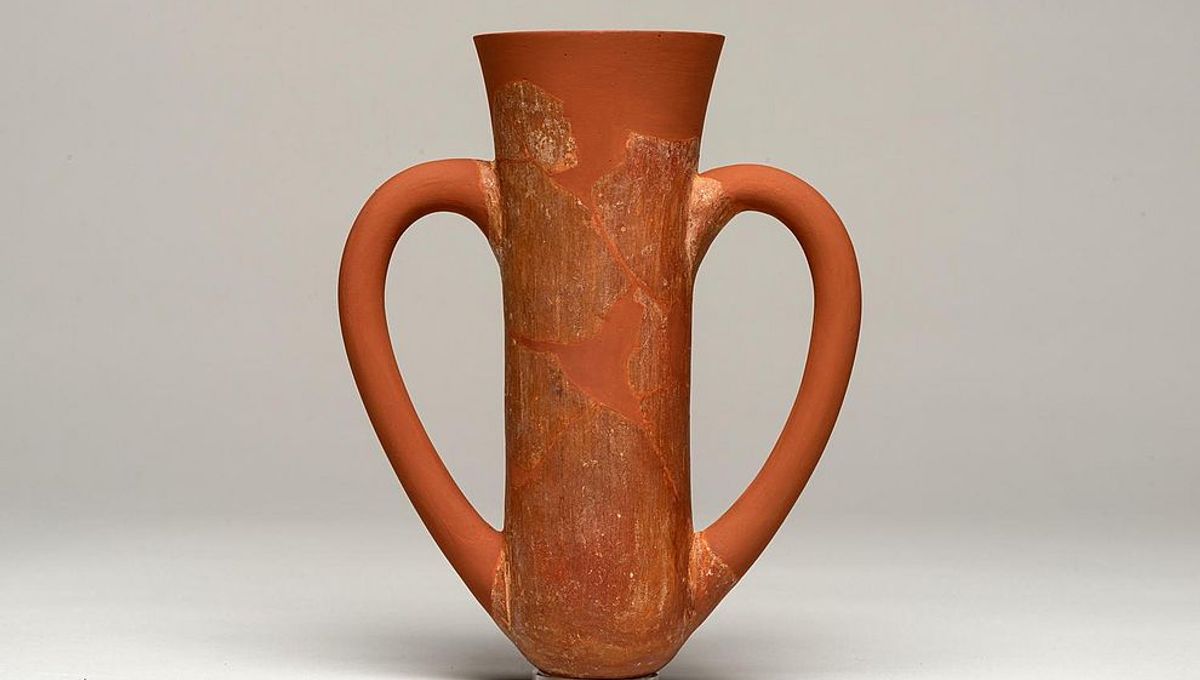
Wine has a potent place in ancient Greek culture and myth, but while it may be thought of as something reserved for the elite or divine alone, new chemical evidence shows it was drunk by common people in Troy too.
Although much about the story of Troy as recorded in Homer’s Iliad is the stuff of fantasy, the city itself – immortalized in the epic story – did exist and was discovered by the amateur German archaeologist Heinrich Schliemann in 1873.
During his excavation of Troy and other sites, Schliemann came across examples of a drinking vessel known as a depas goblet (depas amphikypellon), which is distinct for its slender body and two handles. According to Schliemann, this type of clay goblet was mentioned in the first book of Homer’s Iliad, during an engagement between Hephaestus, the god of metalwork and volcanoes, and his mother, Hera:
“So saying, he hurried to his dear mother, and placed a two-handled cup in her hands,” after which “the white-armed goddess, Hera, smiled at this, and took the cup from her son, still smiling. Then he served wine to all the other gods, starting on the left, pouring sweet nectar from the mixing-bowl.”
So far, over 100 depas goblets have been found in Troy alone, covering the period between 2500 to 2000 BCE. They have also been recovered from sites scattered across the Aegean and all the way to Asia Minor and Mesopotamia (modern-day Iraq).
But despite their potential reference in the Iliad, archaeologists have not been completely sure what these drinking vessels were used for and by whom. Not only did depas goblets have a wide geographic distribution, but they also turned up in various places, such as in funerary sites as well as domestic contexts. Some of them have been considered burial gifts, while others still may have had a more everyday use.
This latter idea was put forward by Schliemann himself, who believed that the majority of examples he discovered in Troy were used for drinking wine or a similar wine-like alcoholic beverage by the elite at special occasions.
This is because wine was the most expensive drink in the Bronze Age and depas goblets appear to be precious items. However, more recent work has proposed that the vessels, given their wide distribution, may have also been used more regularly by other classes, such as trans-Anatolian traders, where the double handles were convenient for carrying. But these traders would also have likely been among the wealthier citizenry, so does this mean the vessels really were just used by higher-class people?
This is where the new collaborative research from the University of Tübingen and the University of Bonn comes in. The University of Tübingen’s classical archaeology collection holds a depas goblet and some fragments from Schliemann’s original trove that could reveal new information on their use.
In a chemical assessment, Maxime Rageot from the University of Bonn milled a 2-gram sample from the two fragments and then heated it to 380°C (716°F). He then examined the resulting mixture using gas chromatography (GC) and mass spectrometry (GC-MS).
“The evidence of succinic and pyruvic acids was conclusive: they only occur when grape juice ferments. So now we can state with confidence that wine was actually drunk from the depas goblets and not just grape juice,” Rageot explained in a statement.
Given the high concentration of organic residues on the fragments, the team concluded that the vessels were used regularly and probably across a long period of time.
Taken on its own, this would definitely confirm that this expensive goblet and wine-drinking was purely intended for the higher classes. But this was only the first step. The team then conducted similar analysis on everyday drinking vessels found in settlements around Troy to see what they contained.
“We’ve also chemical studied ordinary cups that were found in the outer settlement of Troy and therefore outside the citadel. These vessels also contained wine!” Stephen Blum, from the University of Tübingen added.
“So it is clear that wine was an everyday drink for the common people too.”
As such, the team conclude that depas goblets were indeed a preferred and much-loved vessel for drinking wine in Troy, but ultimately they were just one among numerous others.
The study is published in the American Journal of Archaeology.
Source Link: Wine Was Enjoyed By All In Ancient Troy – Even The Commoners Drank It